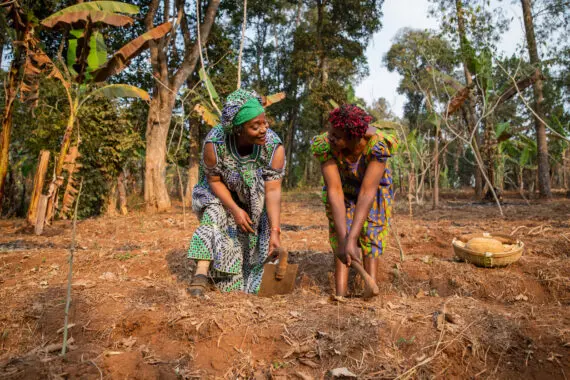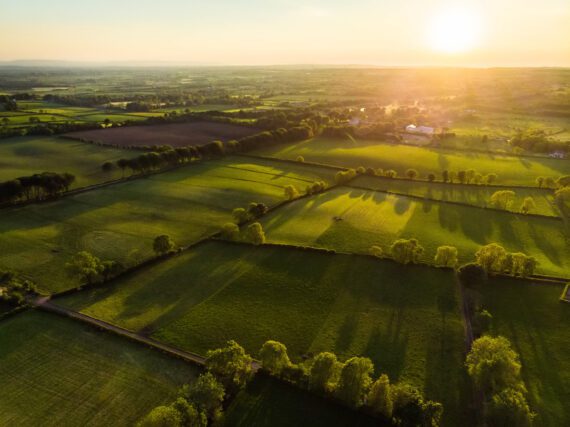By Isabel Vander Molen
At Bread for the World, we recognize that there are many causes of hunger, including extreme weather events and disasters, ranging from hurricanes to wildfires to prolonged drought and floods.
How does extreme weather cause hunger? Within food systems—the steps needed to get food from farm to fork—extreme weather events can disrupt whether food is accessible, affordable, or nutritious. And those are the building blocks of food security. From sweeping away transportation lines, to damaging important buildings like supermarkets and health clinics, to destroying crops, food can become harder to access and afford when one or more infrastructures and institutions are disrupted.
The clearest examples often come at the start of a food system, on the farms and in the gardens where food is grown and harvested. When Hurricane Helene struck farmlands and communities in the fall of 2024, the need for aid and assistance was evident.
The policies on federal assistance may be the same for everyone, but not everyone benefits from disaster assistance in the same ways. Marginalized groups, or people who have less say in decisions that affect them, often benefit least. Some of these groups may be those who live in remote rural areas, low-wage workers, or communities of color.
Communities in North Carolina continue to assess what has happened and how best to rebuild in the aftermath of Hurricane Helene and farmers are grappling with complex impacts. Jeff Nix estimates that Hurricane Helene cost his family farm, Flavor Full Farm, crops and revenue worth more than $1 million. Even beyond the damage to Nix’s farming business, children in surrounding communities are missing out on nutrients. Flavor Full Farm’s apple harvest is an integral part of a Farm-to-School Feeding Program that benefited nearly 1.5 million children in North Carolina during the 2022-2023 school year.
Farms in Florida and Virginia suffered millions of dollars in agricultural losses from Hurricane Helene. Government efforts to deliver aid for recovery and farmers’ reconstruction efforts are ongoing. An investigation done by Civil Eats found that post-disaster agricultural policies are largely designed to benefit larger farms, and smaller farmers can face barriers to accessing benefits.
As federal and local governments work to support local communities in the aftermath of natural disasters, the next logical question is what to do if—or when—it happens again. While the Federal Emergency Management Agency (FEMA), the U.S. Department of Agriculture (USDA), and other agencies are instrumental in supporting recovery efforts from extreme weather shocks, reacting afterward has limitations.
Sandy Kronik is the CEO of HappyDirt, a company that grows and distributes organic and local produce throughout the southeastern United States.
“Many farmers that I work with have said they used to think they needed to budget for a bad season every seven years and now it’s really every three years,” said Kronik.
As climate change continues, scientists project increases in the intensity and frequency of extreme events and, in turn, the economic shocks they cause. Beyond reacting to the losses caused by climate change, the federal government also needs to support efforts to identify and implement ways of building the resilience of local communities to climate extremes. This will enable people to better withstand future shocks in the United States.
In the next farm bill, there are opportunities to improve how post-disaster aid reaches small and local farmers and communities most at risk. These improvements may range from better insurance coverage to more efficient recovery efforts to stronger rural infrastructure. In the long run, it is critically important to equip rural and farming communities to build resilience to future losses linked to extreme weather.
Agricultural and rural communities are the foundation of vibrant, reliable food systems that keep people in our country nourished. This means that farmers need to resume producing food as soon as possible after a disaster. To do so, they need resources that will enable them to prepare in advance as effectively as possible.
Isabel Vander Molen is a climate-hunger fellow, Policy and Research Institute, with Bread for the World.



